- About Us
- Columns
- Letters
- Cartoons
- The Udder Limits
- Archives
- Ezy Reading Archive
- 2024 Cud Archives
- 2023 Cud Archives
- 2022 Cud Archives
- 2021 Cud Archives
- 2020 Cud Archives
- 2015-2019
- 2010-2014
- 2004-2009
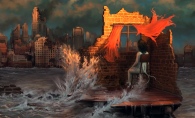 |
Apocalyptic Scientific Experiments |
(Lead article image credit: Daniel Conway)
It may not be surgically clean or painless, but it can be very fast
We love science and the scientific method - without it we'd be still thinking that lightning was Zeus hurling thunderbolts, the sun was an enormous campfire, and the earth itself was balancing on huge turtles (a cosmology that still holds a certain charm to certain people). We'd be ignorant troglodytes who would not know what hit us, if the world suddenly came to an end.
We have scientists to tell us that we should learn to love - and fear - the Finality, the coming End of All Things, that is darn nigh inevitable, though hopefully removed by a few quadrillion years. But rest assured, science can speed up things considerably in this direction, and here is a short how-to list:
1. Nuclear Fun-Was-Had-By-All. "Now we are all sons of bitches."
The poster child for the fear that science and engineering can give us – beyond Shelley’s fictitious Frankenstien, of course -- was born on July 16, 1945, in New Mexico. Not one to miss something so obvious, its daddy, the one and only J. Robert Oppenheimer (‘Oppy’ to his pals) thought “I am become Death, the destroyer of worlds” from the Bhagavad Gita – but Kenneth Bainbridge, the Test Director, said it even better: "Now we are all sons of bitches."
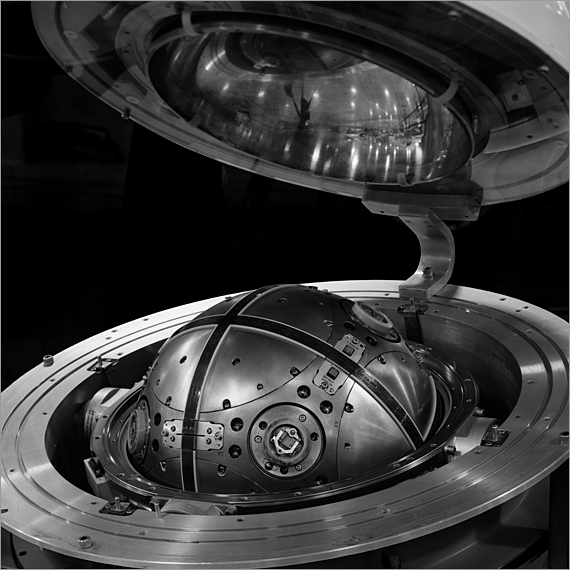
Inertial Guidance Module, ICBM 1986, photo by Martin Miller, click to see more)
Sure, the Trinity Atomic Bomb Test -- the event that began the so-called atomic age, leading to our now-constant terror that one day the missiles may start to fly and the bombs begin to fall -- was the first, but since then there have been all kinds of new, if not as flashy, scientific investigations that could be ten times more destructive, or even could ultimately gobble up our Universe...
2. A Subatomic Nightmare, or the Bubble of Doom
Naturally this is an exaggeration, but it’s still fun – in a shudder-inducing kind of way – to think about all these wildly hypothetical doomsdays. Putting aside the already overly publicized fears over the Large Hadron Collider creating a mini black hole that immediately falls to the core of the earth – eventually consuming the entire globe – some researchers have expressed concern that some day we may create, or unleash, a subatomic nightmare.
The hunt for the so-called God particle (also called a Higgs boson), for instance, has made some folks nervous: one wrong move, one missing plus or minus sign, and we could do something as esoteric and disastrous as discovering that we exist in a metastable vacuum (or "false vacuum") – when one of our particle accelerators creates ("nucleates") a bubble of lower energy vacuum, which would then "approach at nearly the speed of light and destroy the Earth instantaneously, without any forewarning." (more info)

(image credit: Alexei Kozachenko)
"Vacuum decay is the ultimate ecological catastrophe; in the new vacuum there are new constants of nature; after vacuum decay, not only is life as we know it impossible, so is chemistry as we know it. However, one could always draw stoic comfort from the possibility that perhaps in the course of time the new vacuum would sustain, if not life as we know it, at least some structures capable of knowing joy. This possibility has now been eliminated." - S. Coleman
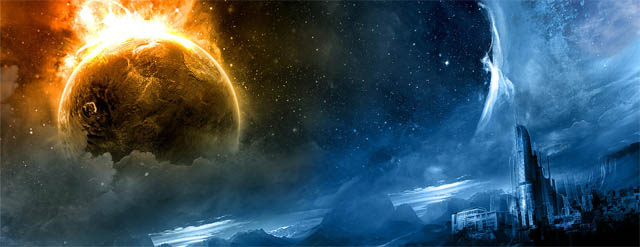
("Apocalyptica". Click to enlarge. Art by StefferX)
Some models describe the bubble as pretty much Universal, or bigger than our Universe, in which case we - just like these troglodytes - certainly would not know what hit us.
3. "Grey Goo" replaces everything, wants more
A new threat to everyone on the planet is the idea of developing nanotechnology. If you've been napping for the last decade or so, nanotech is basically machines the size of large molecules: machines that can create (pretty much) anything on a atomic level. The question – and the concern – is what might happen if a batch of these microscopic devices gets loose. The common description of this Armageddon is "grey goo."
The little machines would dissemble the entire world, and everything and everyone on it, until all that would be left is a spinning ball of, you guessed it, goo.

(image via)
Somewhere down there are nanobots, busy having breakfast. Some Dr. Doom scenarios mention that once the Earth is consumed, the army of nanobots could be directed toward the Sun, and the Sun would dispose of them (or it could be the other way around - you never know 'till you try)
4. Rogue Genetic Tweaks
Another concern for some folks is that, for the first time, we’ve begun to seriously tinker with genetics. We’ve always fooled with animals (just look at a Chihuahua) but now we can REALLY fool with one. It doesn’t take a scientist to imagine – and worry about – what happens when we tinker with something like ebola or, perhaps even worse, create something that affects the reproduction of food staples like corn or wheat. Spreading from one farm to another, carried perhaps on the wind, this rogue genetic tweak could kill billions via starvation.
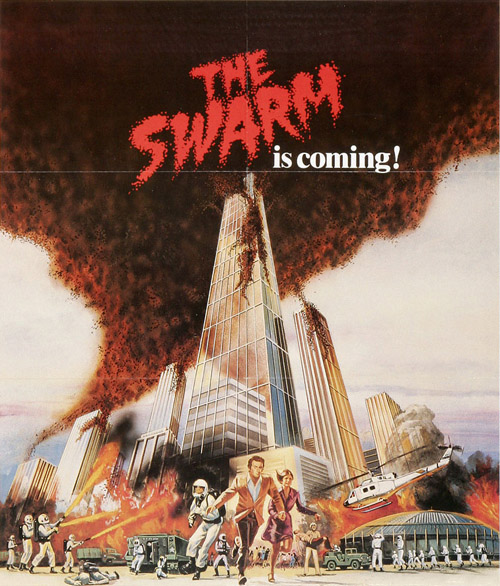
"How is babby formed, how the girl get pregnant" -
And then there’s us. What happens if the tweak – carried by a virus or bacteria – screws not with our food but where we’re the most sensitive: reproduction? Unable to procreate we’d be extinct in as few as a hundred years.
5. One lonely AI seeks human company... is anybody there?
While it’s become a staple of bad science fiction, some scientists see it as a natural progression: whether we like it or not, one day we will create a form of artificial intelligence that will surpass and replace us. Even putting aside the idea that our creations might be hostile... (see this old pulp image, for example)
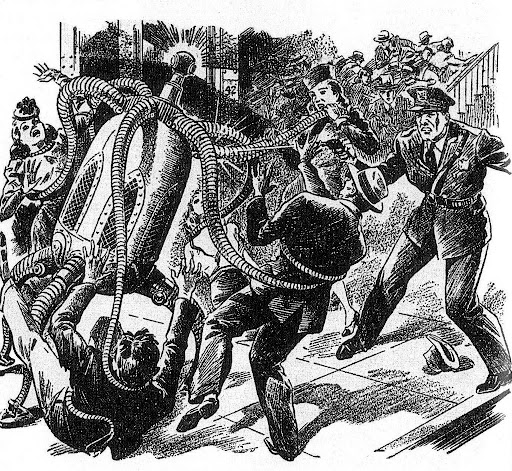
...the fact that they could be better than us at everything means that it would simply be a matter of time before they go out into the universe – and leave us poor throwbacks behind.
On top of that, the only medicine known to cure such humiliation is deadly, too -

In the meantime, you can chat with Earth's first "Artificial Intelligence" entity - very polite Alice, who can truthfully answer your questions about her future and destiny, if you choose the right words.
Apocalyptic scenarios a la carte
We could continue to enumerate the frightening possibilities (here is a good site that lists a lot of them), and you could always go see the "2012" movie - see it the only proper way, in January 2013 - but when it comes to scientific progress, it seems to be flexible enough to produce new, gruesome and unavoidable ways to end it all, just when we're not looking (although it always works out fine in the end)
You've got to love this frightful aspect of science. It's thrilling to know that the world of observation, hypothesis, prediction and experiment can be at the same time so lethal and absurd. It threatens with doom, and yet always provides the happy ending.

(image credit: Jack Kirby, via)
And, if some enthusiastic scientists inadvertently send our world spiraling into a cosmological in-sink-erator... one thing left to us would be the hope that there is Somebody Out There... Somebody who will wake up and realize that it was all a dream.
This article originally appeared on Dark Roasted Blend.
M.Christian has published more than 300 published short stories, is the editor of over 20 anthologies - including The Burning Pen, Guilty Pleasures, The Mammoth Book of Future Cops and The Mammoth Book of Tales of the Road (with Maxim Jakubowksi) and Confessions, Garden of Perverse, and Amazons (with Sage Vivant) - and is the author of the collections Dirty Words, Speaking Parts, The Bachelor Machine, Licks & Promises, Filthy, Love Without Gun Control, Rude Mechanicals, and Coming Together: M.Christian; and the novels Running Dry, The Very Bloody Marys, Me2, Brushes, and Painted Doll.
